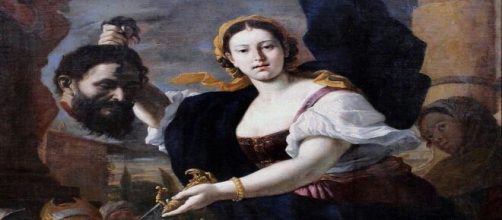Is there such a thing as art history?
Maybe a better way to talk about this is to skip the dialogue and go straight for the answer: there is no such thing as art history. How can it be otherwise? The stories it tells depend on who is doing the telling, like museums that cash in with blockbuster shows of art’s super-stars.
Fleeting fame
Raising the art history question was an Artnet News report last week about once-popular painters who are not today. Artists’ fall from favor is due to the “fickleness of art history,” the report said.
The art-history question came out of an exhibit at the Worcester Art Museum of 17th and 18th-century painters who used to be in demand but aren’t anymore.
Artnet picked up that thread and ran with it under the headline: “500 years ago, these artists were household names.” For discussion purposes, I’ve picked just one artist in the 17th century, Mattia Preti. Some few may know his work, but most probably don’t.
Fading star
How popular was Preti in his day? A newly published bio, “Mattia Preti: Life and Works” by Keith Sciberras makes plain that owing to the artist’s great patronage in Rome, “he became one of the most notable artists of his time.”
Preti had a thing or two going for him in Rome, not only the patronage but also his ability to turn out paintings quickly. He was prolific and not just with small, simple, single-figure works. He liked to picture large crowds on large canvases.
Even in his version of Judith and Holofernes, which so many artists picture with the three central figures in the Biblical story - Judith, her maid, and Holofernes – Preti painted a mob scene of Judith’s countrymen after she saved them.
Wrong move
So, how did Preti lose his high-profile standing in the art world? One factor may well be his departure from Rome and spend the last 40 of his 85 years on the island of Malta. As if to point up the ill-effect of this relocation, in a new bio of the artist by Keith Sciberras, a professor at the University of Malta, calls Malta “an artistic backwater.”
It’s not surprising, then, that most of Preti’s huge output sits in private collections in Malta. He’s credited with nearly 700 works, most of which the public hasn’t seen until now to some extent in the new bio and at the Worcester Art Museum show.
Last month, the Wall Street Journal’s art writer Willard Spiegelman reviewed the Worcester Art Museum show, reporting that the collection belonged to a Jewish collector who died in WWII. His review ran under the headline, “What the Nazis stole from Richard Neumann (and the search to get it back).” One of the plusses in the show, said Spiegelman, was the chance for the public to see works not normally seen. As he put it, “There are no big names in the exhibition.”
Museum alert
But what you see at Worcester Art Museum is not all there is. Curator Claire Whitner told Spiegelman, “There’s more out there, somewhere, waiting to be rediscovered.”
If only museums would give their blockbuster shows of the big-name artists a rest and give others a chance. Exhibit halls of the world please copy.


